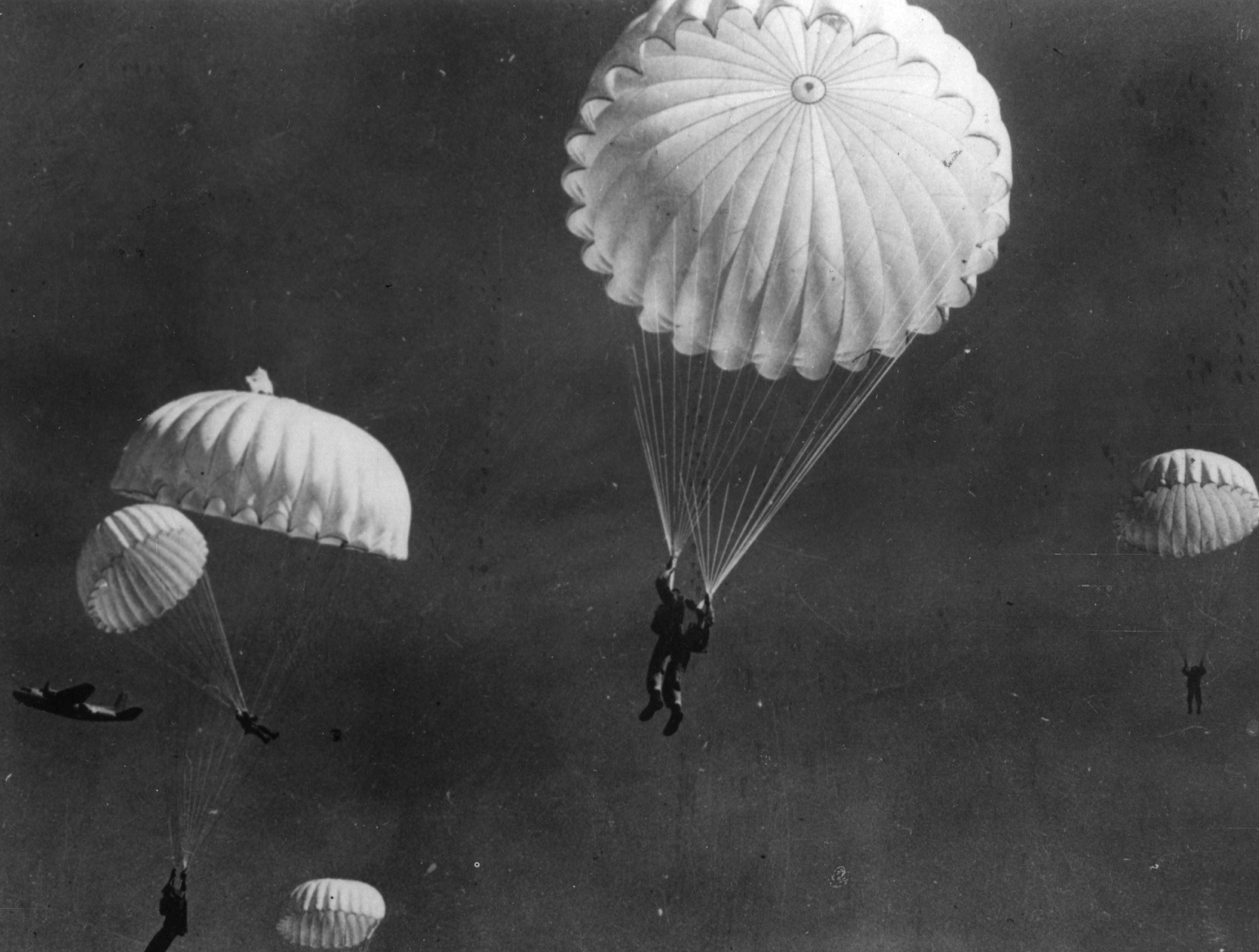From his perch in the turret gunner seat of a modified B-24 bomber, Bill Becker had a lot of questions.
Like, why was his plane covered in glossy black paint, rather than the standard gray? Who was that person who was hustled aboard the plane without a word? Or even just as simple as, where was he supposed to be flying that night?
But Becker knew not to ask too many of those questions – the point was for him not to know the answers, just in case the plane was shot down and he was caught.
Becker was a gunner working for the U.S. Army and the Office of Strategic Services, the precursor to the CIA, on high-risk secret missions to drop supplies and sometimes individual agents behind enemy lines first in France and then further into Europe during the Second World War.
It was known as Operation Carpetbagger, and the first flights took off on this day 75 years ago.
The initial idea was to supply the French Resistance with radios, batteries for radios, weapons, ammunition, food and clothing during daring nighttime drops – especially in weather that the enemy assumed no sane pilots would risk flying in.
“It was really harrowing. We were really in bad territory all the time,” Becker later recalled in a video published by the U.S. Air Force.
Becker said he first realized he was in for an unusual assignment during training, when he and his crew would fly at night from Savannah, Georgia to Cuba and back.
“And I always said, ‘Why the heck are we going out at night?’” Becker said.
When he reached the operational airfield at Harrington, England and saw the planes had been painted black, he understood.
An Air Force history says the planes had been heavily modified, with turrets replaced with additional cargo hatches and blackout curtains replacing some other guns. The cargo hatch was renamed the “Joe Hole,” from which agents – known only as Joes — could parachute into enemy territory.
“The only ones that knew where we were going were the pilot and the navigator,” Becker said. “When we got in the air, there was radio silence. We could talk on intercom between each other, but we didn’t know what the mission was. And what we were dropping.”
It turned out they were dropping a lot of stuff.
The Air Force says that in one month in July 1944 the planes dropped at least 4,680 containers, 2,909 packages, 1,378 bundles of leaflets – “to disguise what they were really doing” – and 62 Joes. The containers had parachutes on one end and shock absorbers on the other to lighten their landing.
Of the Joes, Becker said he knew nothing.
“We didn’t know who we were dropping. If we got caught and they’d ask us, ‘Who did you drop?’ ‘Joe.’,” he said. “I never knew who was in the back. I never knew the agents that we might be dropping. They got on the last minute. Our planes would get ready to go in the evening and then a black Chevorlet would come with the windows closed and everything and whoever was going to get in in got into the plane from the back end. [They’d] get in and keep them in the waist of the plane until we were ready to drop them.”
After the successful D-Day invasion in June 1944, Operation Carpetbagger expanded into drops throughout Europe and into Germany.
“In addition to the dangers from German night fighters and flak, the Carpetbaggers always ran the risk of crashing into hillsides as they made low-level parachute deliveries to the resistance forces waiting below,” according to Air Force history. “From January 1944 to May 1945, they complete 1,860 sorties and delivered 20,495 containers and 11,174 packages of vital supplies to the resistance forces in western and northwestern Europe. More than 1,000 parachutists dropped through the B-24 Joe Holes into enemy territory.”
Becker recounted one drop into Norway that he said got a little hairy, flying so low that the wings were two feet from the natural walls of the fjords they were flying through.
“When we got out of the plane, we had the branches of trees in the bomb bays. That’s how low we got to the trees,” he said. “Always trouble. We came back with bullet holes, with all that stuff that came back at us.”
Not everyone survived the harrowing missions. The Air Force says that 25 planes were lost and eight others so badly damaged that they couldn’t fly. More than 200 individuals went missing or were killed in the operation, but the Air Force says many of those initially thought missing would somehow turn back up in Harrington “with the help of the same resistance forces they had been sent to resupply.”
This article was featured in the InsideHook newsletter. Sign up now.
